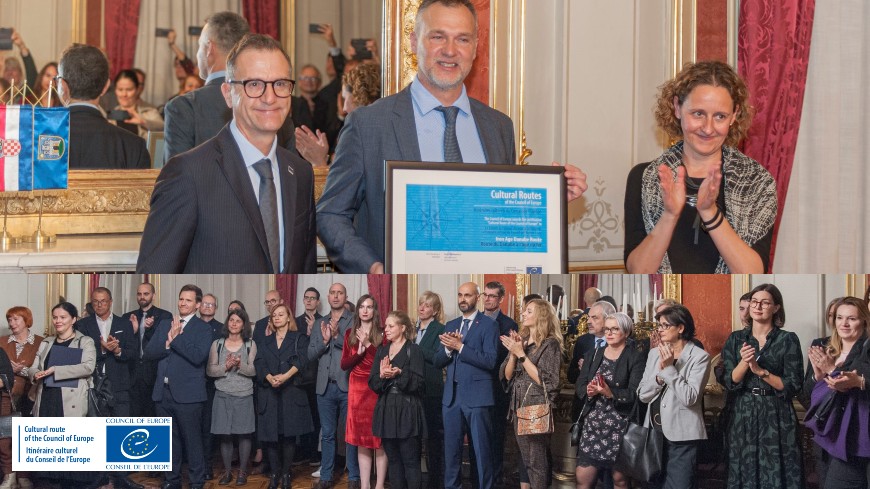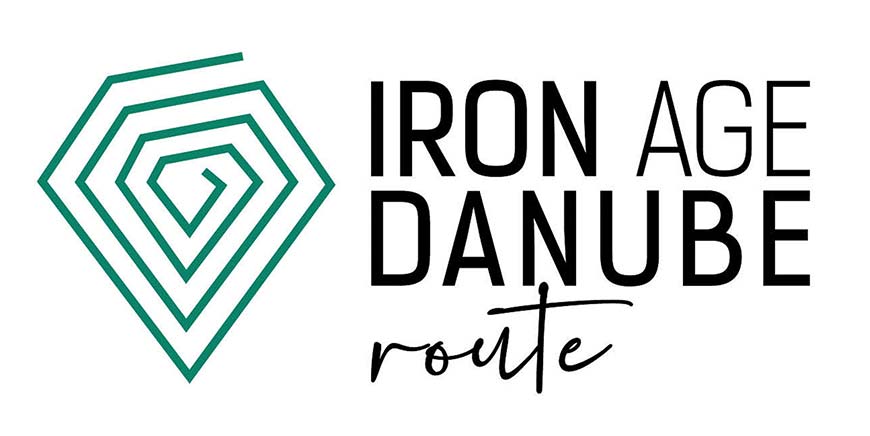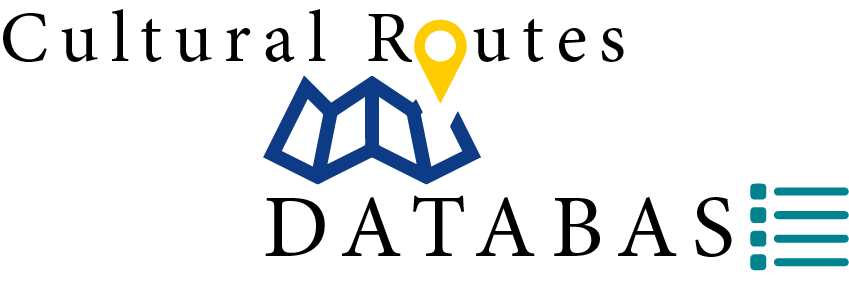On 3 November, the Iron Age Danube Route was awarded the certificate as a “Cultural Route of the Council of Europe” at an award ceremony in Zagreb, Croatia. The Cultural Route gathers 30 members from 7 countries of the Danube region: Austria, Bosnia and Herzegovina, Bulgaria, Croatia, Germany, Hungary and Slovenia. It focuses on the promotion, presentation, research and sustainable development of the Iron Age heritage of the Danube region.
The certification ceremony was held in the Dverce palace under the aegis of the City of Zagreb. The certificate to the Iron Age Danube Route was awarded by Mr. Stefano Dominioni, Executive Secretary of the Enlarged Partial Agreement on Cultural Routes of the Council of Europe together with the Minister of Culture and Media of the Republic of Croatia, Mrs. Nina OBULJEN KORŽINEK to Mr. Sanjin MIHELIC, President of the Iron Age Danube Route Association and Director of the Archaeological Museum of Zagreb.
The ceremony was attended by Ms. Laura TOPOLOVŠEK, envoy of the mayor of the City of Zagreb, as well as a number of members of the diplomatic corps of the network countries, members and stakeholders from all partner countries and other distinguished guests. The formal award ceremony of the certificate was the highlight of a two-day Closing Event of the international project "Virtual archaeological landscapes of the Danube region project" (acronym: Danube's archaeological eLandscapes). The project is carried out as part of the Interreg Danube Transnational program and is co-funded by the European Union through the ERDF and IPA II.
Croatia is a member State of the EPA since 2016. Mrs Tatjana Horvatić from the Ministry of Culture and Media and Mrs Vlasta Klarić from the Ministry of Tourism and Sport are Croatia’s Representatives to the EPA Governing Board.









